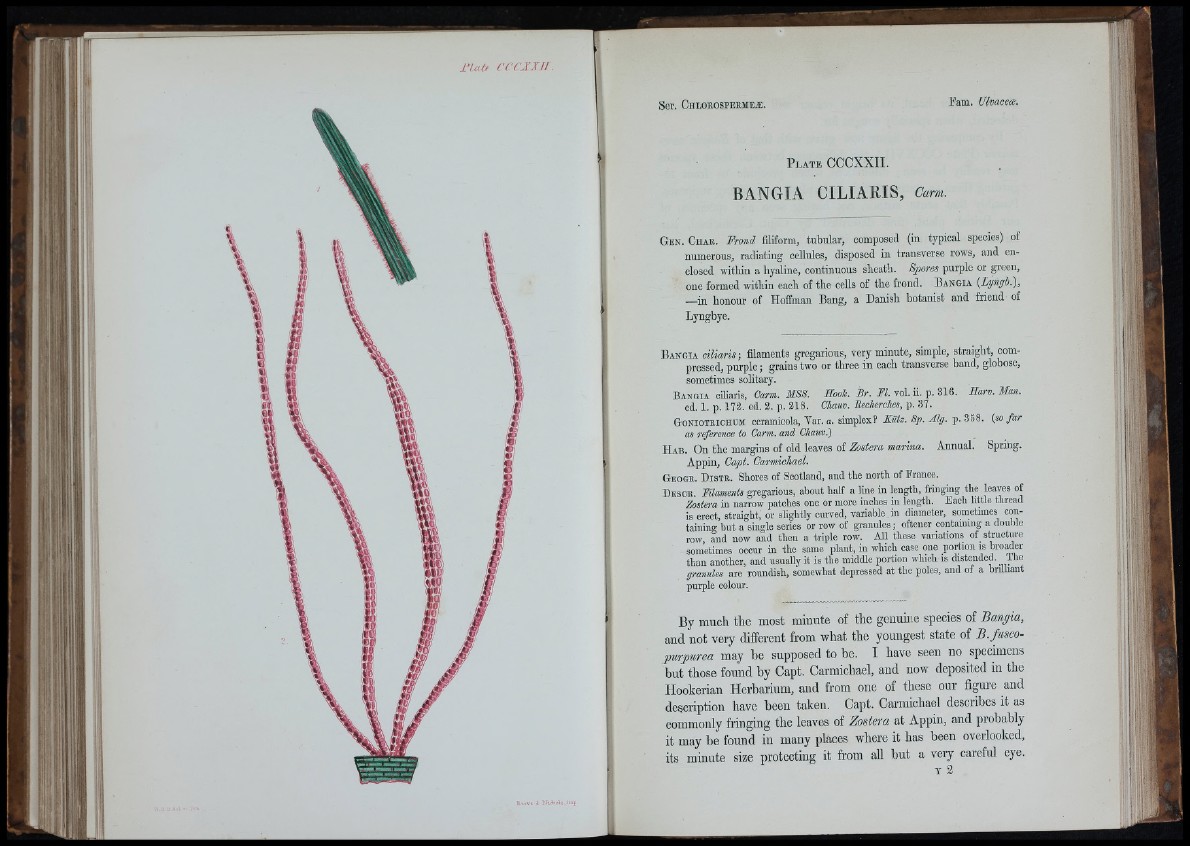
if!
I ! It If r c c A ' x i / .
Uetve i 3Iichols,iiiSP
l a t e CCCXXII.
BANGIA CILIARIS, Carm.
G e n . Ch a e . Frond filiform, tubular, composed (in typical species) of
numerous, radiating cellules, disposed in transverse rows, and enclosed
witliin a hyaline, continuous sheath. Spores purple or green,
one formed within each of the cells of the frond. B ang ia {Lyngb.),
—in honour of Hoffman Bang, a Danish botanist and friend of
Lyngbye.
B angia ciliaris; filaments gregarious, very minute, simple, straight, compressed,
purple; grains two or three in each transverse band, globose,
sometimes solitary.
B angia ciliaris, Carm. MSS. Hooh Br. FI. vol. ii. p. 316. Harv. Man.
ed. 1. p. 173. ed. 3. p. 218. Cliauv. Uecherches, p. 37.
G onioteichum ceramicola, Var. a. simplex? Kiitz. Sp. Alg. p. 358. {so fa r
as reference to Carm. and Cliauv)
H ab. On the margins of old leaves of Zostera marina. Annual. Spring.
Appin, Capt. Carmichael.
Geoge . D is t e . Shores of Scotland, and the north of France.
D esck. Filaments gregarious, about half a line in length, fringing the leaves of
Zostera in narrow patches one or more inches in length. Each little tliread
is erect, straight, or slightly curved, variable. in diameter, sometimes containing
but a single series or row of granules; oftener containing a double
row and now and then a triple row. All these variations of structure
sometimes occur in the same plant, in which case one portion is p'oader
than another, and usually it is the middle portion which is distended. The
granules are roundish, somewhat depressed at the poles, and of a brdhant
purple colour.
By much the most minute of the genuine species of Bangia,
and not very different from what the youngest state of B.fiisco-
purpurea may be supposed to be. I have seen no specimens
but those found by Capt. Carmichael, and now deposited in the
Hookerian Herbarium, and from one of these our figure and
description have been taken. Capt. Carmichael describes it as
commonly fringing the leaves of Zostera at Appin, and probably
it may be found in many places where it has been overlooked,
its minute size protecting it from all but a very careful eye.
Y 2